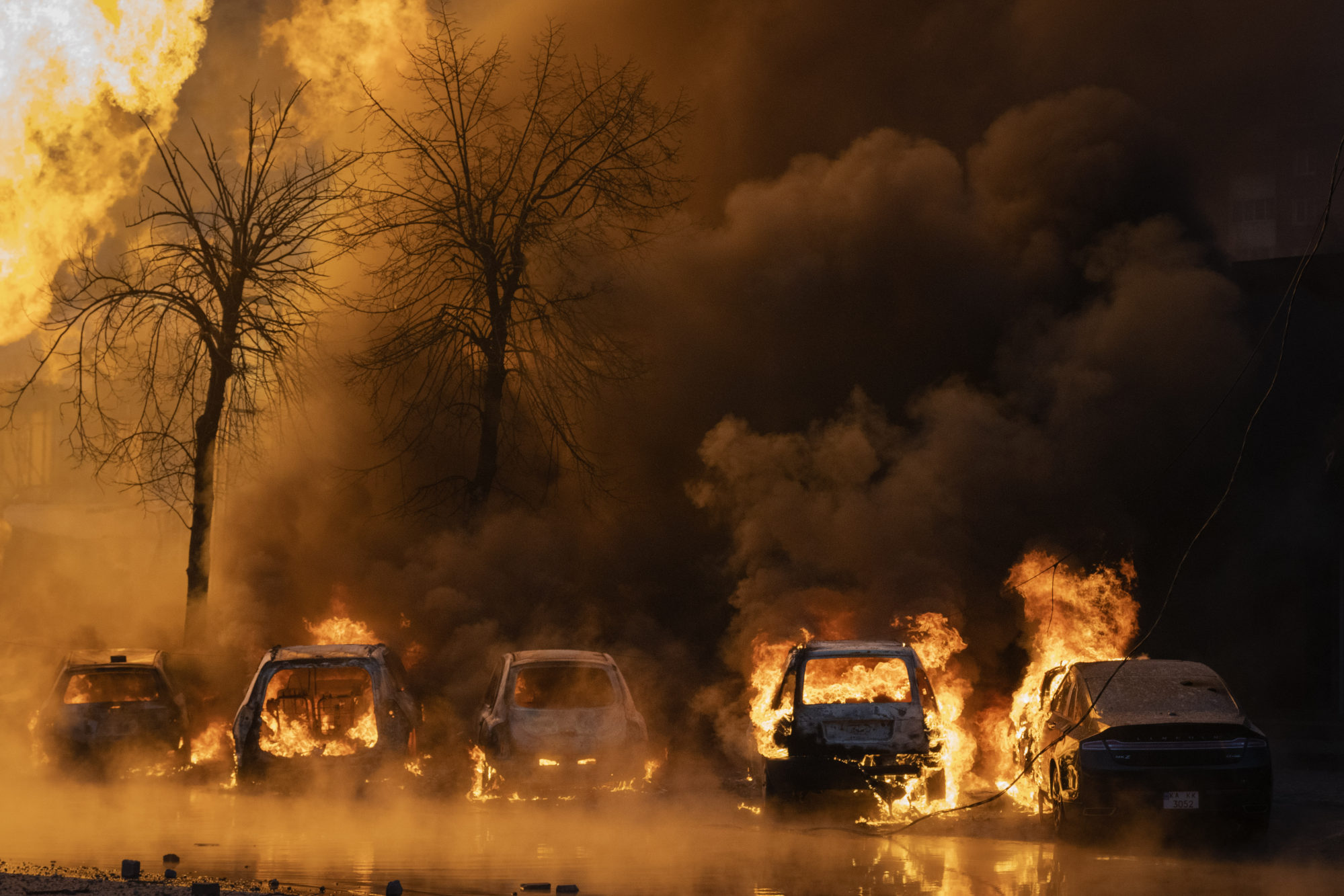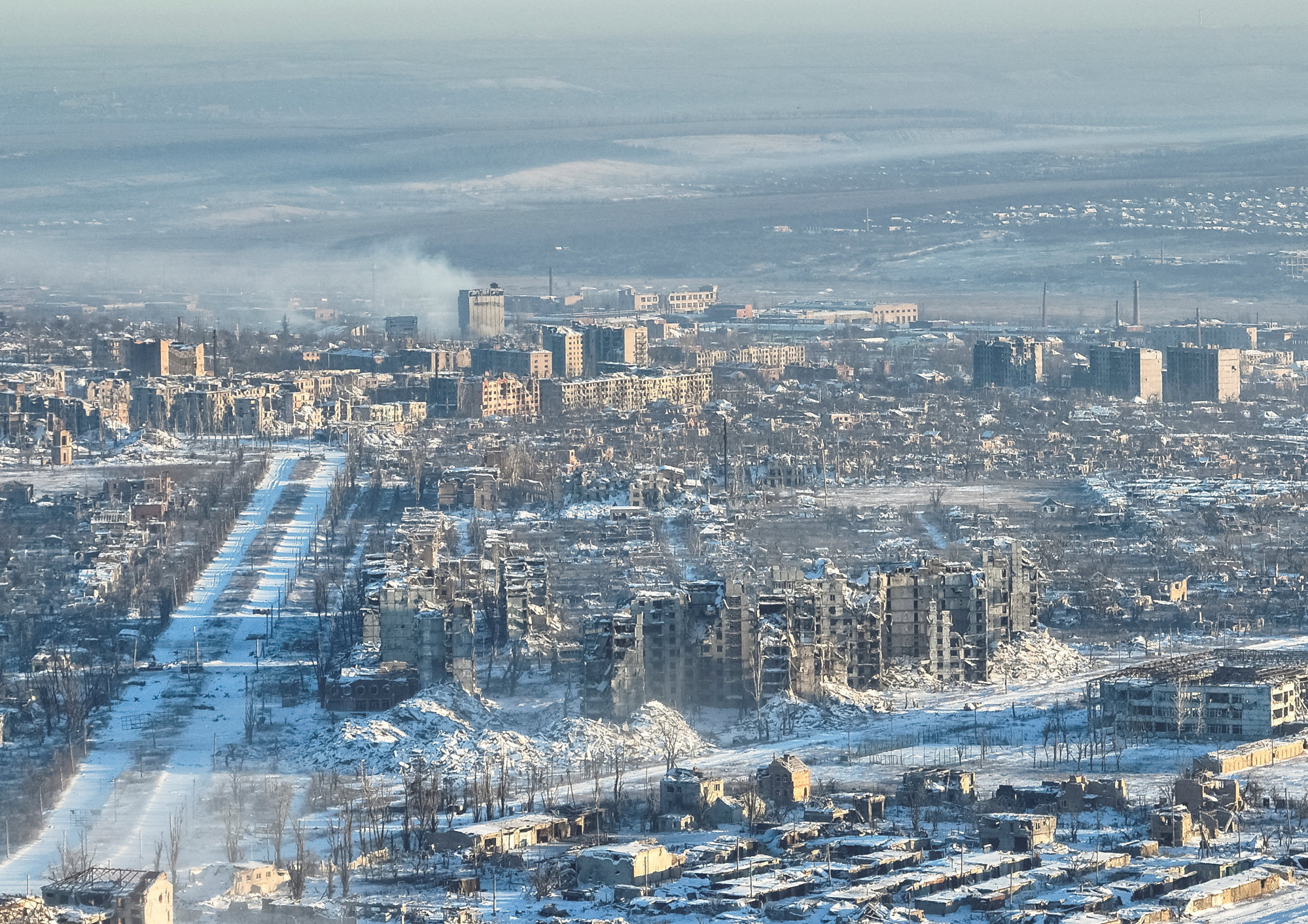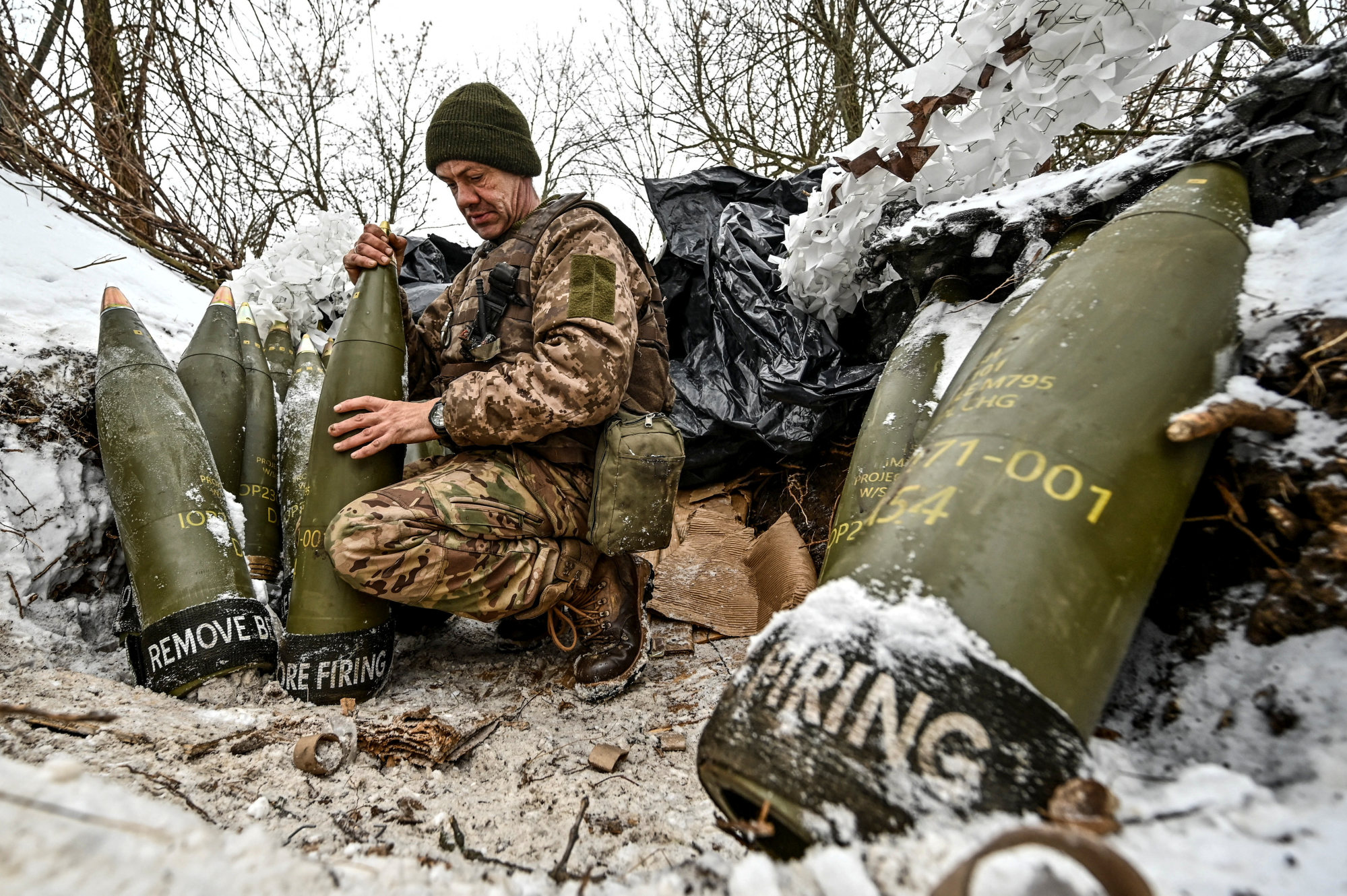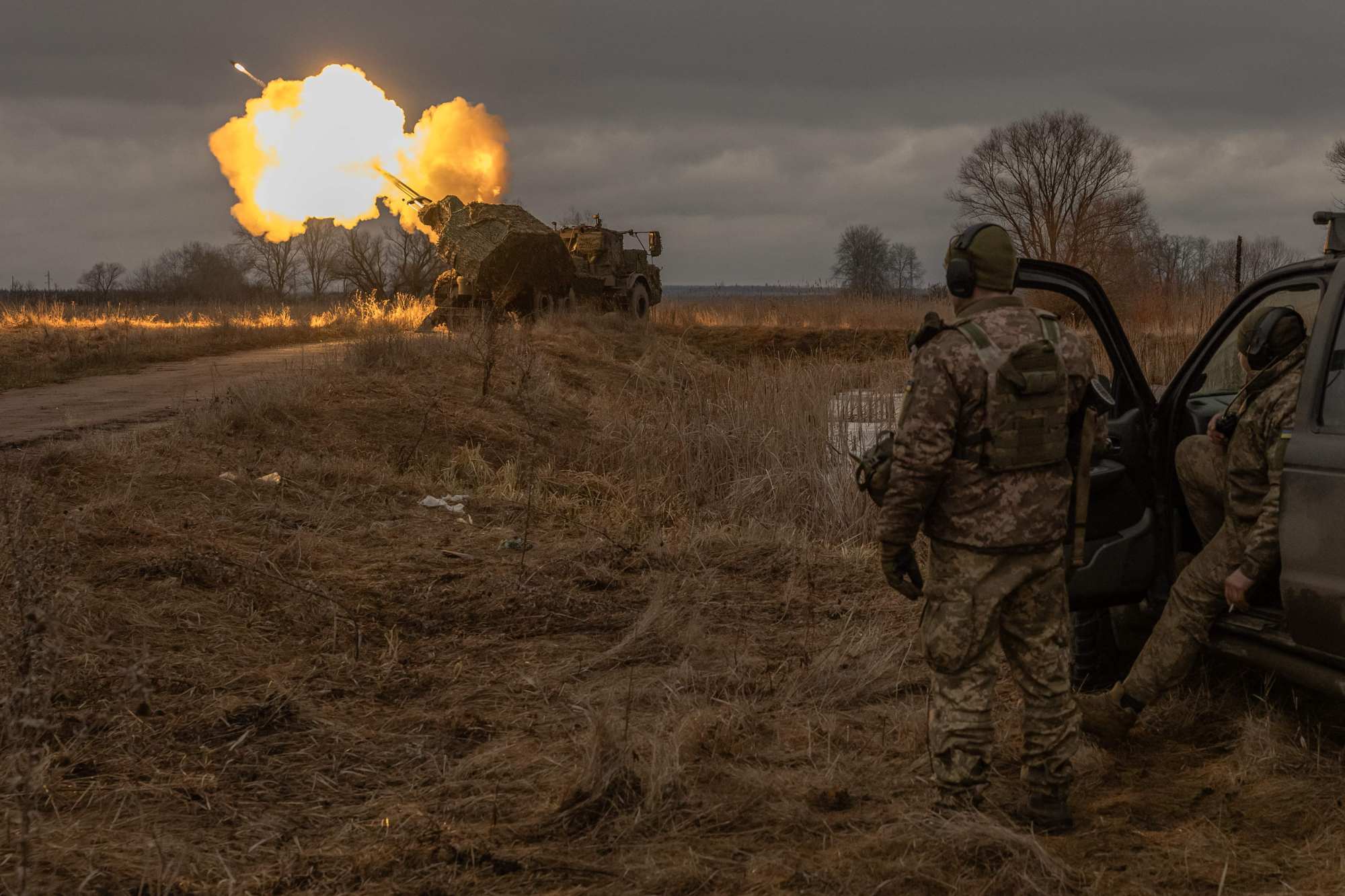Recent waves of Russian missile attacks killed dozens in Kyiv and other cities as Ukraine’s air defences, which rely heavily on expensive interceptors provided by the allies, weren’t able to destroy as many of the incoming weapons as in the past, according to a European diplomat.

As Russia’s invasion grinds into a third year, the fighting has settled into trench warfare with drones leaving little chance for either side to surprise the other along the front.
But to sustain this “active defence”, as the approach is known, Ukraine will need steady supplies of artillery shells and other munitions that allies are struggling to provide.
Kyiv denies Zelensky has fired Ukraine’s top general after reports
Kyiv denies Zelensky has fired Ukraine’s top general after reports
“We all know what is needed on the ground,” Estonian Defence Minister Hanno Pevkur said in an interview Tuesday. “Now the question is what we can send and what we can give.”
European allies will fall far short of the 1 million rounds they had promised to deliver by March 1, diplomats said, providing only about 600,000 by that deadline amid persistent production delays and concerns about depleting stocks.
Defence ministers meeting in Brussels this week may seek to count other supplies to boost the total, but still won’t reach the 1 million goal, which was set last year, the diplomats said.
If Ukraine’s troops don’t have the shells to keep the pressure on, “Russia can continue firing artillery as their infantry attacks Ukrainian positions,” said Ann Marie Dailey, a researcher at Rand Corp. and an officer in the US Army Reserve. “That’s not a fair fight for the Ukrainian defenders.”
The challenges come as Ukraine’s commanders are finalising plans to hold the almost 1000km front line this year, probing for weaknesses in Russian defences but not attempting a major breakthrough after last year’s counteroffensive yielded disappointing gains.
Tensions have grown between President Volodymyr Zelensky and his military chief, Valerii Zaluzhnyi, as the front lines have stagnated, according to Western diplomats.

Moscow’s forces, meanwhile, are too battered to make significant advances unless Ukraine’s defences collapse, according to Western officials. Even then, the Kremlin would likely need to mobilise more troops to cement gains, something it’s so far been reluctant to do.
In Washington, the White House’s US$60 billion assistance package has been stalled for months amid opposition from hardline Republicans. While the administration is still telling Kyiv and the other allies that it expects to win approval ultimately, doubts are growing as the presidential campaign picks up.
“Without it, simply put, everything that Ukrainians achieved and that we’ve helped them achieve will be in jeopardy,” Secretary of State Antony Blinken told a news conference Monday alongside Nato Secretary General Jens Stoltenberg, who’s visiting Washington this week to help rally support for Ukraine.
Seeking Western support, Zelensky warns of World War 3 risk
Seeking Western support, Zelensky warns of World War 3 risk
European Union leaders meet February 1 for an emergency summit to try to overcome the opposition from Hungary’s Moscow-friendly government to releasing the €50 billion (US$54 billion) in aid.
If that effort fails – as it did in December – the bloc will have to find a way to fund the support without Budapest. Either way, the EU aims to approve the aid by the end of February, a European official said.
Even if EU aid does come through, the lack of US support would be felt by Ukrainian forces on the battlefield by late spring, according to Western diplomats.

“The next few months will be decisive,” French President Emmanuel Macron said Tuesday. “Even if we’ve been lucky enough and are still lucky enough to have strong American support, it’s first and foremost our problem.”
The US has been pushing Kyiv to spell out its war plan for this year more clearly given the constraints on support.
Officials expect a combination of continued pressure along the front lines with more covert operations and long-range strikes deep behind Russian lines. Ukraine has used home-grown weapons for some of those attacks, which have hit Moscow’s supply lines and bases and shaken its control over the Black Sea.
China is watching US drama over arming Ukraine: Nato chief
China is watching US drama over arming Ukraine: Nato chief
Allied officials point out that the defensive tactics, while they don’t deliver the kinds of dramatic breakthroughs that helped win Ukraine international support in the first year of the war, will ultimately wear down Russia’s ability to keep fighting.
Kyiv has also built up some reserves of key allied munitions in recent months to help ensure its troops are supplied, according to a Western official.
But that’s not enough to offset the shortage of artillery shells.

Ukrainian troops are firing on average only about a third as many rounds that the Russians do, according to Pevkur, the Estonian defence minister.
Moscow is on track to get about 4.5 million shells from its own production and supplies from North Korea, according to Estonian estimates.
And while Ukraine’s more advanced howitzers and targeting equipment mean its forces don’t need as many shells as Russia does to do the same level of damage, the quantity disadvantage can’t be overcome completely.
Doomsday Clock remains at 90 seconds to midnight amid wars in Gaza, Ukraine
Doomsday Clock remains at 90 seconds to midnight amid wars in Gaza, Ukraine
“Ukraine inevitably is on the strategic defensive,” said Ben Barry, a land-warfare specialist at the International Institute for Strategic Studies. With enough modern, hi-tech equipment from the allies, he added “it might well be able to inflict significant damage on the Russians”.
Though Vladimir Putin has shifted Russia’s economy almost fully to a war footing, it will take years for it to rebuild the thousands of tanks and other weapons lost so far in the fighting, according to Western officials.
And Russia has lost more than 315,000 soldiers killed and wounded, according to US estimates. Lately, its troops have also been succumbing to outbreaks of hantavirus, a debilitating illness spread by mice in its trenches, according to Ukrainian officials.

The Kremlin has sought to signal through intermediaries that it might be willing to consider talks with the US about ending the war, though American officials have said they’re sceptical about any such offers.
Moscow is likely to delay any serious attempt at negotiations until after the US presidential election in November, hoping for a second term for Donald Trump, who has said he would make a quick deal to end the war, according to people familiar with Russian thinking.
Ukraine, meanwhile, is struggling to replenish the ranks of its troops, with President Zelensky criticising the military’s call for as many as 500,000 new conscripts.
Still, Kyiv is hopeful that if the allied support ultimately is approved, it will be able to rebuild its forces and step up the pressure on Russia.
F-16 fighter aircraft will enter service later this year, according to officials, helping Ukraine challenge Russia’s air power. Allies also are working on a package of security pledges aimed at showing their commitment to protecting Kyiv for years to come.
Fighting is likely to subside a bit for the next few months, with more offensive action resuming in May and June as the ground dries, according to Estonia’s Pevkur. That’s also when the fate of EU and US aid will be clear, he said.
“If we do not have the solution by that time, then for sure it’ll be extremely difficult for Ukraine to keep its positions,” he warned. “Because as we know, Russia doesn’t care about losing men. We’ve seen that so many times.”

